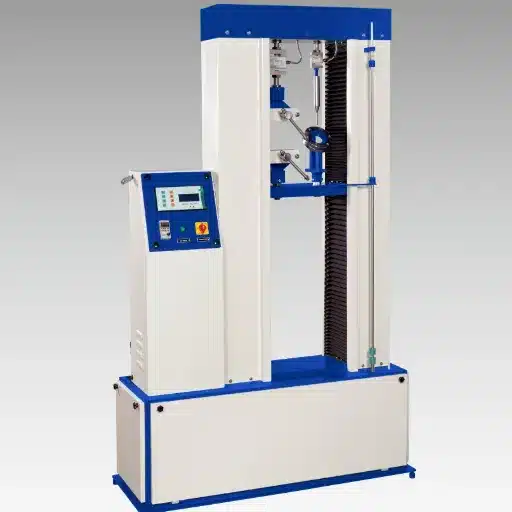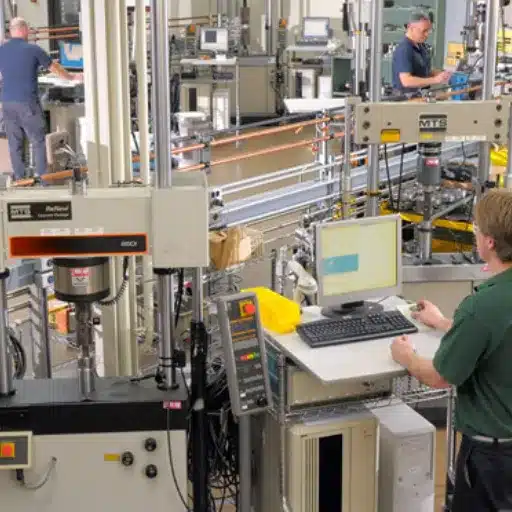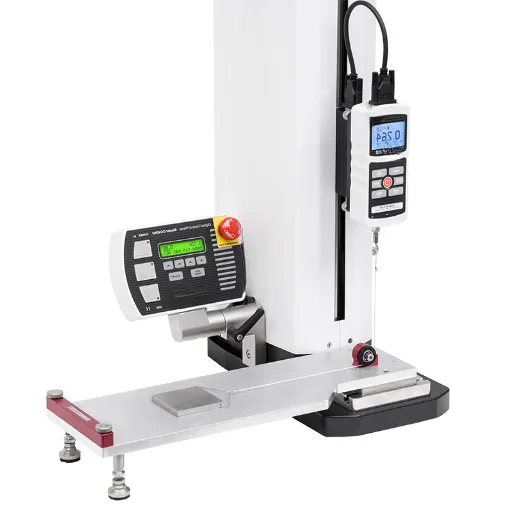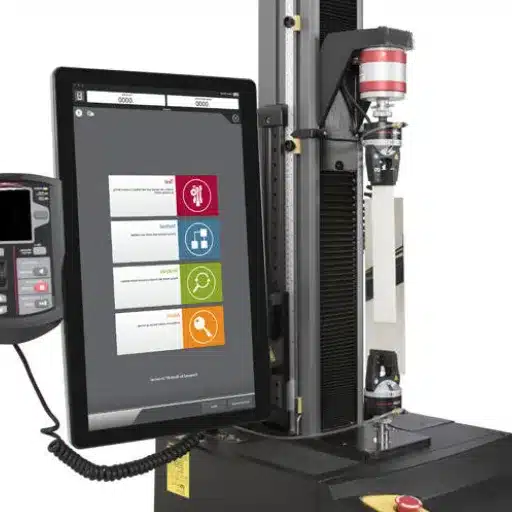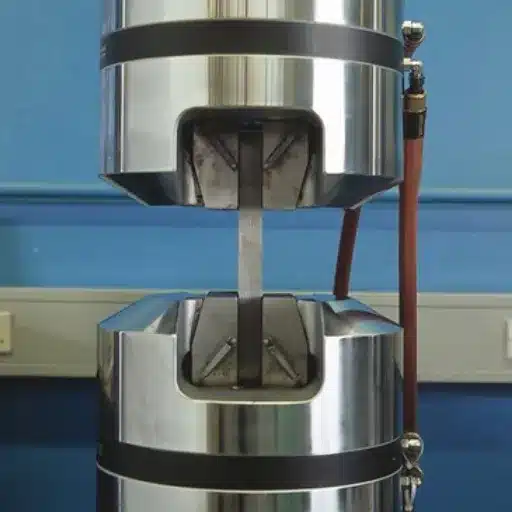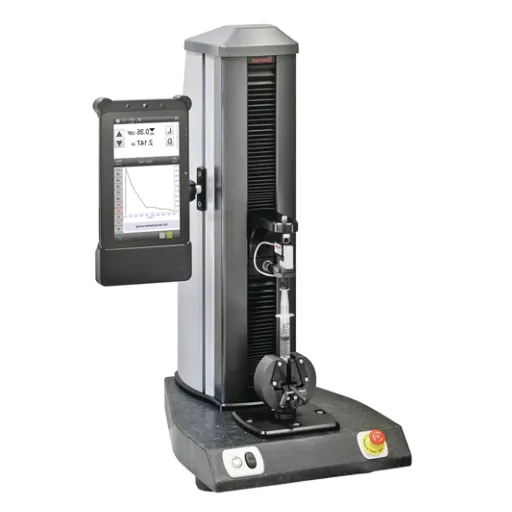This blog delves into stress relaxation, a phenomenon going into what goes on with materials when they undergo a constant load. Whether you’re an acolyte, an engineer, or one-taking-care-of-materials-professionally, this put-together option will throw some light on what stress relaxation is, why it occurs, and how it’s applied in various industries. By the time you finish this article, you will be equipped with some insight into this fundamental topic without needing to immerse yourself in complex theories. We shall, therefore, discuss stress relaxation in mechanics.
Understanding Stress Relaxation
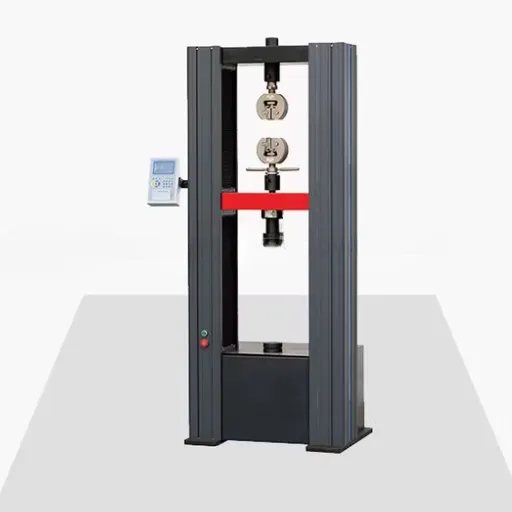
Definition of Stress Relaxation
Stress relaxation results in a gradual decrease of stress experienced by a material under a constant strain or deformation over time. It is because the material, in response to sustained deformation, attempts to redistribute the internal stresses away from the imposed stress to lessen the external load, thereby exhibiting relaxation. Hence, stress relaxation is ordinarily a very common phenomenon in polymers, metals, and other viscoelastic materials having some distinct solid-like and liquid-like behaviors under prolonged stress.
One of the first and foremost variables influencing stress relaxation is the movement or displacement of molecules or dislocations in the material. Time permits the rearrangement within the internal structures of the material to reach a state of minimum potential energy by relieving the applied stress. The rate at which relaxation proceeds depends on environmental influences such as the temperature and the kind of material concerned. Higher temperatures basically increase the relaxation rates because the molecular movements become more pronounced with the increase in thermal levels.
Stress relaxation poses a real problem in many applications, especially in engineering and in manufacturing operations. It finds special consideration in the design of components such as seals, gaskets, or fasteners, which are typically subjected to some magnitude of constant strain during service. By keeping a record of the way a material reacts to stress relaxation behavior, engineers can double check that the design will remain viable and serve its function over the period of the component’s use, thus ensuring better and safer design implementation.
Time-Dependent Behavior of Materials
Time-dependent behavior occurring in materials comes about when a material’s properties or performance alter by being subjected to a stressful environment, temperature, or moisture. This phenomenon is of utmost importance wherever persons consider a material loaded over time or repeat loading. Time-dependent phenomena that include creep, stress relaxation, and viscoelastic effects influence the ultimate functionality and reliability of a given component.
Key Time-Dependent Phenomena:
- Creep: Slow deformation under constant load or stress, particularly at higher temperatures
- Stress Relaxation: Stress diminishes due to constant strain being applied
- Viscoelastic Effects: Combined viscous and elastic behavior responses
The understanding and consideration of time-dependent behavior in materials are indispensable for estimating the life and safety of different types of products and systems. Engineers and designers rely on experimental data, mathematical models, and simulation tools to analyze such effects for informed selection of materials and design considerations. By knowing what materials will do over time under certain conditioning, they can improve their performance, reduce maintenance cost, and avoid load failures in anything from infrastructure to aerospace-based applications.
Comparison with Creep and Other Phenomena
| Phenomenon | Condition | Response | Temperature Dependency |
|---|---|---|---|
| Creep | Constant load | Slow permanent deformation | High temperature dependent |
| Stress Relaxation | Constant strain | Stress decreases over time | Temperature dependent |
| Fatigue | Repetitive loading cycles | Progressive local damage | Less temperature dependent |
Using this knowledge of differences, engineers will better predict material behavior and ensure reliability in some workings. Stress relaxation is one related phenomenon but differs in nature, occurring as the stress within a material decreases over time under a constant strain. The material adjusts internally to minimize stress, thus becoming essential in bolts, seals, or cables.
Scientific Mechanisms Behind Stress Relaxation
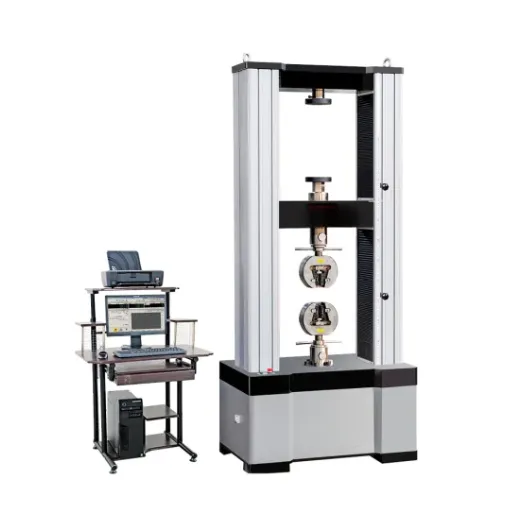
Molecular Dynamics and Relaxation Processes
Molecular dynamics are at the heart of the methods used for the mechanisms of stress relaxation. In essence, stress relaxation is the material rearrangement of molecular structures under an applied strain. Atoms, molecules, or chains within the material shift progressively to relieve internal stresses and to lower the external stress as measured. This is dependent on temperature, time, and intrinsic properties of the material.
🔬 Viscoelasticity Concept
A very important concept in this respect is that of viscoelasticity: materials which exhibit both viscous and elastic behavior. The viscous behavior is such that the material deforms gradually with applied stress, and the elastic behavior is the capability to return to its original dimensions following removal of the stress.
In addition, relaxation processes are most often characterized by what is called the time-dependent response, or the relaxation modulus function. This function expresses the manner in which stress ideally should decrease exponentially with time for a given strain kept constant. This understanding is very important for materials that would be subjected to prolonged stress, e.g., seals in a high-temperature environment or structural members in buildings.
Factors Influencing Stress Relaxation
There are various factors involved in stress relaxation, each having an important role in the behavior of materials under prolonged stressing:
🧪 Material Composition
Metals, polymers, and ceramics react in different ways and times because of their molecular arrangements and bonding. Polymers are especially vulnerable due to their visco-elastic nature.
🌡️ Temperature Effects
Higher temperature spells faster relaxation because molecules become mobile, while lower temperatures slow down the process, resulting in higher stress levels for longer periods.
⏱️ Time & Stress Level
Higher initial stresses usually quicken relaxation, while long duration of strain can increase relaxation with time as the material continues changing at the molecular level.
With this knowledge, it is possible for the engineer to design materials and structures that will actually function and meet the requirements expected of them. Hence, safety and durability are assured.
Role of Temperature and Molecular Structure
Temperature and molecular structure deeply influence material behavior and performance. Material strength, flexibility, and stability stand largely dependent on changes in temperature, since molecular motion or interaction correspond with the changes in temperature. Elevation of temperature renders many materials flexible owing to intolerant motion of molecules in them, while some may lose their shape or structure.
The molecular structure plays an integral role in determining a material’s response to these temperature changes. Materials with tightly bonded molecular arrangements, such as crystalline solids, tend to exhibit higher resistance to thermal effects, maintaining their strength and shape under a wide range of temperatures. Amorphous or loosely arranged structures, by contrast, turn out to exhibit larger responses to temperature changes in properties such as viscosity, elasticity, or thermal conductivity.
Grasping the temperature and physical interplay is a key in picking a material for a given end use. Engineers and designers analyze these factors with the objective to ensure that any material under consideration stands the environment in which they expect it to be used. Hence, performing under certain environmental conditions so as not to fail, giving off the assurance of safety, reliability, and longevity in design.
Applications of Stress Relaxation
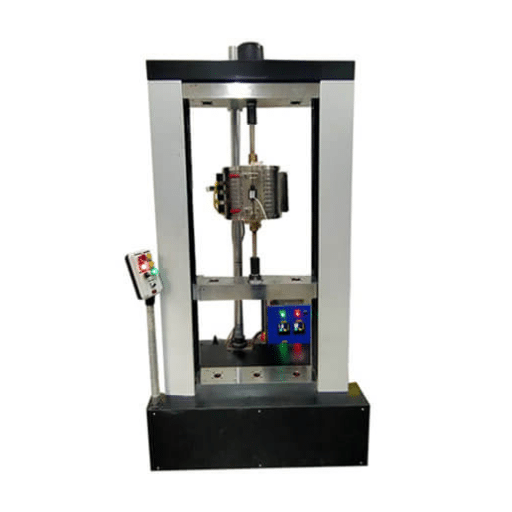
Importance in Engineering and Design
Stress relaxation contributes immensely to engineering and design as it dictates how a material will perform under long-term loading. More so, it is important for safety and functionality in structures and systems that work in environments where stress is constantly being applied. One must concern himself with the stress relaxation of a material to be able to predict its behavior so as to avoid engineering failure compromising the integrity of the design.
⚠️ Critical Considerations
The ability of the material to keep its mechanical properties under prolonged stress is one of the important consideration factors in the stress relaxation. Stress relaxation could lead to a decrease in tension or strength while, for example, bridges, pipelines, or fasteners could go structurally unstable.
Further in making knowledge of stress relaxation, products can be designed for longer service life and reliability. Materials are operated with significant tests simulating the conditions that will otherwise occur so that the materials can satisfy performance criteria. This allows designing robust systems that are specialized to cope with thermal, mechanical, or even environmental demands they are confronted with, thus minimizing dangers and providing long-term value for all users, as well as industrial applications.
Relevance in Elastomer and Polymer Science
Designing elastomers and polymers is of great relevance to the more modern material developments aimed at finding solutions to custom performance needs. Elastomers are elastic in nature and have very high levels of resilience. They find wide application in instances where flexing under stress is required. Examples include sealing, gasket, and shock absorber applications. Polymers provide the options for both versatility and durability, which are essential in making any product, from lightweight packaging to very high-strength aerospace parts.
Automotive Industry
Seals, gaskets, and vibration dampeners
Healthcare
Medical devices and biocompatible materials
Construction
Weather-resistant sealing materials
Sustainable development in elastomer and polymer science continues. Recycling materials, providing bio-based alternatives, and having less negative environmental impact in production and disposal are among its other goals. In a global setting, these are the opportunities for the implementation of solutions for sustainability and simultaneously urging new innovational applications in many industries.
Impact on Manufacturing Processes
Stress relaxation is a state created when any given material is at a strain, with the actually induced stress in the material decreasing as time increases. Such behavior is generally observed in polymers and elastomers used during manufacturing, wherein the molecular rearrangement inside the material, owing to the effect of sustained furnace deformation, lets the stress be decreased. These factors are considered important by industries when the load is laid on a material for a prolonged period requiring consistent performance of the machine or a part of it.
🏭 Manufacturing Challenges
- Material may slowly lose ability to exert pressure over time
- Reduced reliability in fastening or sealing applications
- Need for design alterations or more resistant materials
Being able to treat stress relaxation effectively when it occurs is often a matter of careful material selection, testing, and continuing research to understand the material behavior under operative conditions. Materials with high resilience are preferably used, or additives might be included for increased stability against stress relaxation. Environmental factors such as changes in temperature and load duration are also monitored, ensuring that materials perform well in their applications so maintenance issues can be minimized and industrial components improved from a durability standpoint.
Measurement Techniques for Stress Relaxation
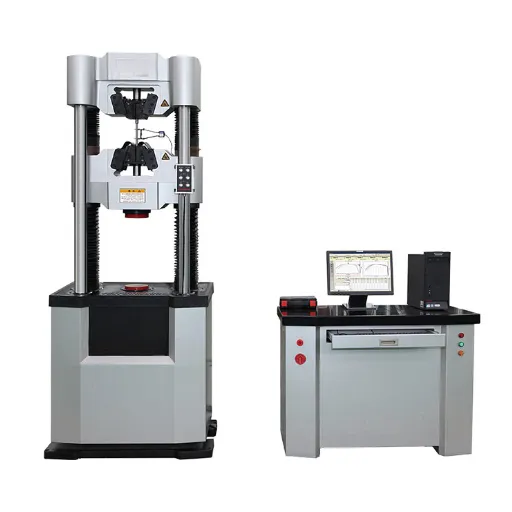
Standard Measurement Methods
Stress relaxation is measured by means of exact methods of testing into the state of living materials in sustained load with time. Fixed strain is applied to the specimen and decrease in stress is measured as it allows the material to relieve itself of stress and thereby gives an idea of its overall performance and endurance.
The constant-load method is expected to subject the strain to the load in practice for prolonged periods, and during such time, the considerable strain develops and the observations are carried on by the trained analyst. The strain measurements give a clear indication of the ability of the material under investigation to suffer stress relaxation.
Often, these tests are analyzed using standardized methods for the sake of accuracy and replicability. This might involve creating the necessary atmosphere in terms of say temperature or conditions within the utilised facility so results remain consistent across such variables. Tests pertaining to certain materials might even refer to standards from international organizations such as ASTM or ISO to introduce validity in measurements and results for comparative purposes across applications or in different industries.
Equipment Used for Stress Relaxation Measurements
🔧 Testing Machines
- Tensile testing machines
- Universal testing machines
- Force transducers for recording
🌡️ Environmental Control
- Environmental chambers
- Temperature control systems
- Humidity regulation
📊 Data Systems
- Data acquisition systems
- Analysis software
- Extensometers and strain gages
Together these instruments and the software guarantee that stress relaxation is measured in an exact, consistent, and real-world-applicable manner. System-software combos are normally employed to plot the data and compute important variables such as the relaxation modulus.
Best Practices in Data Interpretation
- Understanding Context: The process of analyzing data begins with an understanding of the experiment’s background and its objectives. It is crucial to specifically identify what the data represents and how it may relate to the objectives of stress relaxation testing.
- Focus on Trends: Interpretation must focus on trends and patterns within the data, derived from the actual output, so as not to accentuate the effects of outliers. The methodical manipulation of such data leads to conclusions that are reliable and can be applied if needed.
- Method Consistency: In interpreting stress relaxation data, ensure that all apply and follow a standardized protocol for conducting experiments. Enforce the control of conditions and time intervals under which data are gathered and interpreted.
- Thorough Validation: Good interpretation is limited by thorough validation. To assure accuracy, one may want to verify findings against accepted theoretical models or results in the literature. When differences develop with the literature models, analyze whether they came from experimental design changes, environmental variations, or errors during data processing.
Rheology and Stress Relaxation
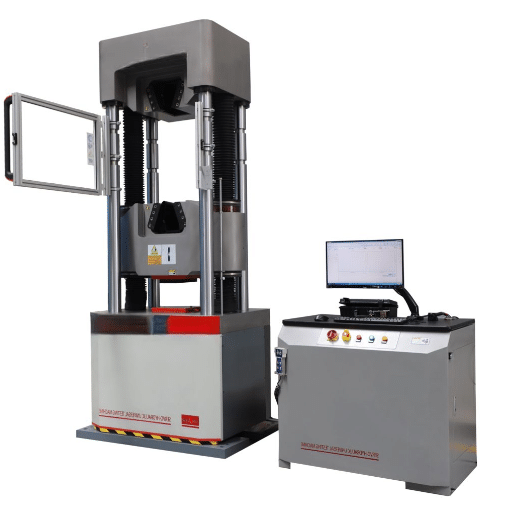
Understanding Rheological Properties
Various parameters defining rheological properties describe the deformation and flow of materials under conditions of forces. These parameters account for a subject’s capability to behave as a non-Newtonian fluid and soft solid in applications ranging from industrial processes to biological subjects. A few important parameters in the rheology domain are viscosity, elasticity, and shear stress. Each of these parameters provides some measures of the mechanical response of the substance.
| Property | Description | Application |
|---|---|---|
| Viscosity | Resistance to flow | Fluid behavior prediction |
| Elasticity | Energy storage and return | Deformation response |
| Shear Stress | Force per unit area | Mechanical response measurement |
Rheology can help configure material properties for requirements. Hence, in manufacturing, it predicts how materials behave when mixing, pumping, or spreading, ultimately saving time and enhancing quality. In biology, such studies help analyze existing materials such as blood or cells. In the end, an understanding of rheological properties leads to better design, function, and performance of systems in which material behavior under stress matters.
Stress Relaxation Phenomena in Viscoelastic Materials
Stress relaxation may be defined as the gradual diminution of stress in viscoelastic materials when a constant strain is applied to them with respect to time. Such behavior is exhibited due to the viscous and elastic nature of deformation, whereby stress is redistributed and lost under deformation. The capacity to relax stress under strain defines the application and performance of these materials.
🔬 Key Factors Affecting Relaxation Rate
- Temperature: Higher temperatures accelerate relaxation due to increased molecular mobility
- Time: Extended duration allows more molecular rearrangement
- Composition: Polymer chain structure and crosslink density influence relaxation speed
Stress relaxation has a vital function in solving problems in polymer science, biomechanics, and engineering. For example, it may be used to predict the behavior of rubber, biological tissue, and polymers under long-term conditions of loading. This knowledge gives scientists and engineers an opportunity to create materials and systems that can better withstand specified stresses while fulfilling a desired function over time.
Applications of Rheology in Stress Relaxation Studies
Rheology, applying techniques that allow understanding and analysis of stress relaxation for various materials and applications, acts as a mainstay in their peculiarities. Through the study of the response of materials under deformation and flow condition, rheology provides a basis for predicting their mechanical behavior in the long term. This is very important in assessing the aging of materials like polymers, biological tissues, and industrial adhesives under long periods of stress to guarantee optimum performance over time.
🏗️ Construction Materials
Optimization of sealants, coatings, and packaging materials for varying environmental conditions and performance criteria.
🏥 Biomechanics
Design of prosthetics, medical devices, and tissue-engineering products that match human body properties.
Under the influence of rheology, these medical treatments are augmented for better performance and longevity in times of critical need. Rheology helps researchers to simulate the mechanical properties of biological tissues, such as tendons or cartilage, so that the synthetic or engineered substitutes can really match up with the human body.
❓ Frequently Asked Questions (FAQ)
Q: What is stress relaxation?
Stress relaxation refers to the gradual reduction in stress experienced by a material when it is held at a constant strain over time. As the material undergoes deformation, the internal forces redistribute, which reduces the amount of stress.
Q: How does stress relaxation differ from creep?
While both involve time-dependent changes in materials, stress relaxation refers to the decrease in stress under constant strain, whereas creep refers to the slow deformation of a material under constant stress.
Q: What is the importance of stress relaxation in engineering applications?
Stress relaxation determines the performance of components and their durability. By understanding how materials behave during stress relaxation, engineers may predict components’ behavior in time and design structures that withstand various stress levels without failure.
Q: What variables affect stress relaxation?
Factors include material type, temperature, time duration under stress, and strain applied. Stress relaxations in elastic materials might differ from those in plastic or viscoelastic materials.
Q: Can elastomers exhibit stress relaxation?
Yes, elastomers can exhibit stress relaxation. When held under a certain strain, they gradually lose stress over periods of time, affecting their performance in applications such as seals and gaskets.
Q: How is stress relaxation measured?
Stress relaxation is measured through rheological tests where a strain of known magnitude is applied to the specimen, and the decrease in stress is followed as a function of time. These tests reveal the stress behavior of the material under long-term loads.
📚 References
- Stress relaxation – Wikipedia – A general overview of stress relaxation, its definition, and applications.
- Stress Relaxation – an overview – ScienceDirect – A detailed explanation of stress relaxation in engineering and materials science.
- What is Stress Relaxation of Materials? – Alemnis – Insights into stress relaxation, particularly in viscoelastic materials.
- Stress Relaxation – Instron – A glossary entry explaining stress relaxation in the context of material testing.
- Stress Relaxation – an overview – ScienceDirect (Materials Science) – A comprehensive look at stress relaxation, including its time-dependent behavior and practical applications.

